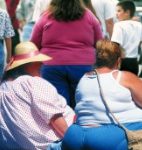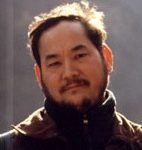Isabel Hilton: What attracted you to the Loess Plateau project?
John D. Liu: We started a decade ago [with the World Bank] to document it and gradually, by returning each year, we have seen such astonishing changes. Gradually it became clear that this was a representation of the fundamental information that determines whether ecosystems survive or collapse. Human civilisations develop, and in development they degrade their environments to the point that they can no longer compensate and they collapse. When the ecosystem collapses, it takes the civilisation with it. This is the perfect example.
This is the cradle of Chinese civilisation — the largest ethnic group on the planet — and it’s fundamentally ecologically destroyed. What is astonishing is that anybody bothered to try to rehabilitate it. It’s counterintuitive to stand on a mountain and not see any vegetation for 360 degrees around and imagine that there is anything you can do about it. Our normal preconceived idea is that it’s too bad, that civilisation destroyed itself. It’s over. There’s nothing we can do.
When we started to film this rehabilitation of the Loess Plateau, that was definitely how we felt. We thought it was definitely a bridge too far. Environmental understanding is all well and good, but this is so degraded. How can you do anything? There was a tremendous sense that this could not be done. Thankfully, the project organisers were not distracted by that. Now we have a functional model of how such ecosystems can be rehabilitated.
IH: What is the biggest obstacle ahead?
JL: We are facing climate change. Sir David King, Britain’s chief scientific advisor, said that this is the most difficult and challenging problem facing humanity, ever. We have to have some big ideas, some hope that we are just not going to watch as the world deteriorates and the ecosystems degrade and the disparity between those who live in wealth and those who live in poverty continues to grow.
Right now, if you take current trends and project them, it’s hard to imagine a happy ending to this. It looks like all over the world you have potentially billions of people living in abject poverty. They are, maybe, subsistence farmers. They are probably using unsustainable agriculture. They may be trying to migrate. And as those ecosystems further degrade, more of those people will try to do that, assuming there is nothing we can do.
The Loess Plateau is a functional model that shows that it is possible to rehabilitate damaged ecosystems and return to some extent ecological function – maybe not 100%. We might get a lot of function back if we really understand what’s going on. The thing that struck me was that when we look at the world now and we imagine that tens of millions of people are squatting by the side of a dirty road, what are they doing? They are not engaged in rehabilitation. If they are not waiting for the United Nations to bring them something to eat, they are probably cutting down trees or killing wild animals for food. And they are ravaging the environment.
IH: What lessons have emerged from the plateau project?
JL: Certain clear principles have come out in the Loess Plateau work: unsustainable agricultural practices must end. They don’t go anywhere; they don’t help anyone to escape from poverty. They just ravage ecosystems. Even tiny changes can have outsized impacts on an ecosystem. That’s why it’s interesting to see what happened on the Loess Plateau. The Chinese were thinking they were building the strongest civilisation, that they were the superpower – does that sound familiar? It’s happening now! If you understand this information, you can act. If you don’t, the outcome is predetermined – human activity without ecological understanding leads to ecosystem collapse.
IH: How can ecosystem collapse be avoided?
JL: There is an alternative – especially for the poor. This is an opportunity to look beyond nationalism and traditional divisions. There is only humanity on this planet if we are talking about the survival of the species. We are all in this together. It doesn’t matter if we are wealthy if these ecosystems degrade. A massive investment has to go into ecosystem rehabilitation and you need millions of labourers – and you find that it works. Large-scale ecosystems can be rehabilitated through the return of function and carbon sequestration which addresses our worst problem.
IH: Will the experience of the Loess Plateau’s rehabilitation be applied elsewhere?
JL: We are now going to Africa to speak in Rwanda, Tanzania and Ethiopia, to design programmes to transfer this information. We want to link the Chinese development people with Africans who need and want to do this, together with the global financial community and the global development community. At first I thought, I’m making a documentary film. Now I think it’s about a basic understanding of the issue that will help us survive. If we don’t understand it, the outcome is predetermined.
NEXT: John D. Liu speaks about his US background and how he became involved in development and environmental issues in China in part two.
The authors:
John D. Liu is a Chinese-American filmmaker whose current project is China’s Sorrow, Earth’s Hope, documenting the ecological rehabilitation of the devastated Loess Plateau.
Isabel Hilton is a London-based international journalist and broadcaster. She is also the editor of chinadialogue.
Still images are taken from John D. Liu’s film China’s Sorrow, Earth’s Hope

